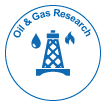Microalgae of Northeast India for bio-energy and other products of commercial potential based on the bio refinery approaches.
*Corresponding Author:
Copyright: © 2021 . This is an open-access article distributed under the terms of the Creative Commons Attribution License, which permits unrestricted use, distribution, and reproduction in any medium, provided the original author and source are credited.
Abstract
In the recent times, microalgae have been the immense source of attraction as a highly potential and promising renewable biomass source of energy, biomittigation and sustainable valuable products. Biotechnological explorations of the underutilized bountiful indigenous algae diversity of NE India, have potentially opened up a new avenue for sustainable product development including biofuel production. Several microalgae species have been marked as potential source of naturally occurring high valued products such as lipids, vitamins, proteins, carbohydrates, antioxidants, colorants, food supplements and other bioactive molecules. The North East India, apart from being one of the mega biodiversity hotspots in the world, has bestowed upon with vivid freshwater microalgal resources. These diverse bio-resources of the region are yet to be explored to the extent for their potential biotechnological applications. Recent studies carried out are envisaged with the isolation and screening of freshwater biodiesel potential microalgae of the region yielding with the isolation of 24 indigenous freshwater microalgae species, which require further works for possible commercial utilizations and biotechnological applications. Among the isolated microalgae, Chlorella sp, Botryococcus braunii, Ankistrodesmus sp, Scenedesmus sp, Euglena sp, Haematococcus sp, Navicula sp, and Nitzchia sp are known to be a few oleaginous microalgae noteworthy for biofuel production. Oil (lipid) contents were quantitatively evaluated in laboratory cultures of isolated Ankistrodesmus sp, B.braunii, Scenedesmus sp, Chlorella sp and Chlorococcum species. The lipid content of some of the isolated microalgae species grown in normal BG11 medium were found to be in the range between 11.3 – 42.0% of dry weight. Analysis of the carotenoid contents of the selected native microalgae species also revealed higher content of lutein, lycopene and astaxanthin, which can be produced as other high valued products for additional fund generation in the course of liquid biofuel production.

 Spanish
Spanish  Chinese
Chinese  Russian
Russian  German
German  French
French  Japanese
Japanese  Portuguese
Portuguese  Hindi
Hindi 


